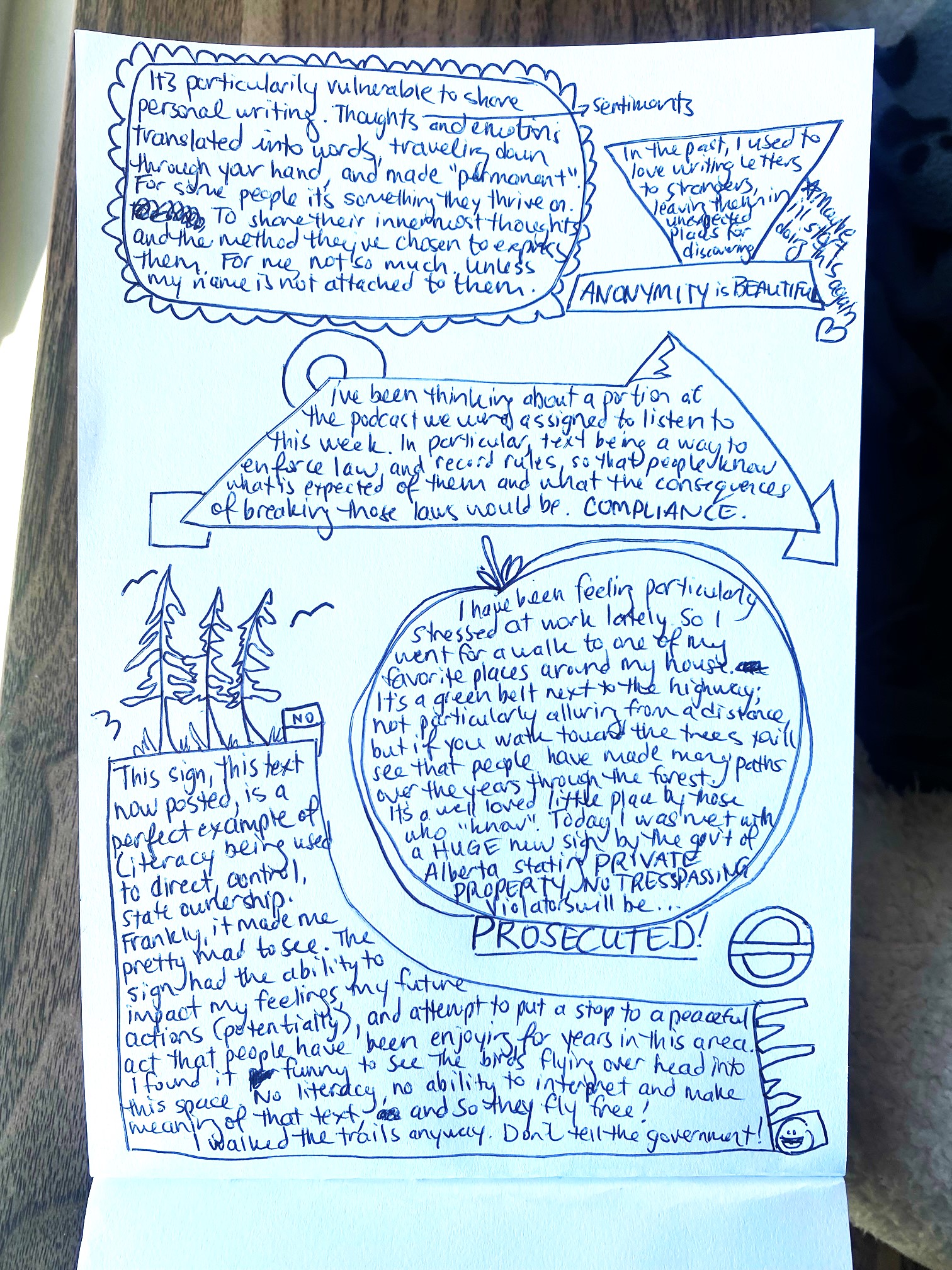Here’s a photo of my manual script, and a few photos of the spaces I’ve referred to in the passage:




Manual Script Reflection:
This assignment was natural for me; I often write in my journal by hand. It’s been something in my life that’s become cathartic. I use it as a way to express myself; not limited by lines on a page, where I can make illustrations in the margins, write non-linearly and get thoughts out of my head. I have volumes of these codices dating back to highschool. These thoughts and entries are rarely (if ever) shared with anybody, and are meant for my own processing—a safe place to reflect.
As mentioned by Lamb & McCormick (2020), text recorded in a codex has the affordance of being able to refer back to concepts made external. By fixing points of information on a page (or parchment, scroll, clay tablet), we create more space in our minds because we are relieved of the need to ‘remember’. We also create something that can be referred to by others, and promotes further inquiry and reflection through space and time. Although I generally don’t share my journal entries with others, I do appreciate the ability to look back at my reflections from different ‘snapshots’ in my life to see how things have changed.
One can see the remnants of handwriting (or cursive) in my printing. This blend between both printing and handwriting serves as a ‘personalized font’, and is not readily replicated in word processing applications, or even in letterpress technologies. It could be argued that a human element is lost when we use technologies to replace writing by hand. This is also seen in how errors/mistakes are addressed. I simply scribbled out a few words that I wanted to change, but in using computer mediated word processors, these changes would be indecipherable and simply ‘deleted’. For the most part I don’t edit my personal journal entries, though. I think there is value in stream-of-consciousness style writing, especially when the intent is expression/reflection.
I write with water-insoluble pen now, at least for text journal entries, because there have been far too many times that I’ve spilled water in my bag and I’ve lost entries. Computer mediated print (especially from an inkjet printer) is susceptible to this same weakness. An affordance that computer mediated writing has over manual methods of writing is that it can be reproduced easily and saved in many places, which decreases the risk of elemental damage. Lamb & McCormick (2020) mention how books have been burned to destroy their lineage and evidence of their existence, but as soon as a text is published on the web, it’s almost impossible to get rid of it completely.
Often in my journal entries, I like to illustrate between thoughts, or contain thoughts in particular shapes. My writing is often not linear, and instead the page becomes a free play of space that I can follow my emotions, thoughts and instincts. Mechanized forms of writing can allow for this to a point (by using a Wacom tablet and digital stylus). However, more formal word processing applications like Microsoft Word or Google docs do not have these affordances readily available.
Lamb, R., & McCormick, J. (Hosts). (2020, May 26). From the vault: Invention of the book, part 1. [Audio podcast episode]. In Stuff to blow your mind. iHeart Radio.
Lamb, R., & McCormick, J. (Hosts). (2020, May 28). From the vault: Invention of the book, part 2. [Audio podcast episode]. In Stuff to blow your mind. iHeart Radio.